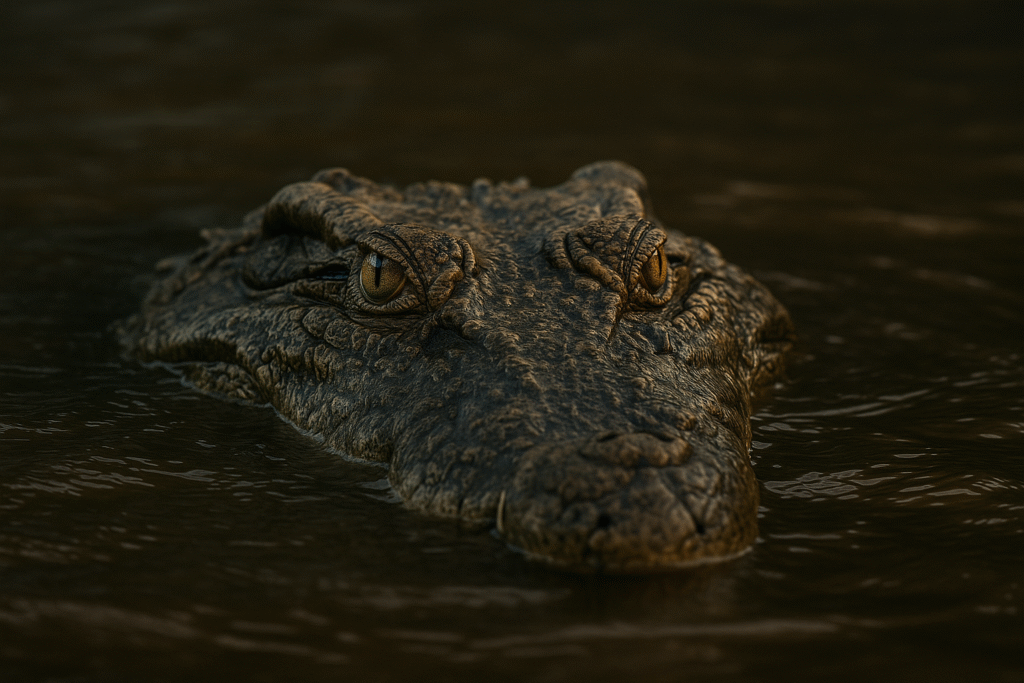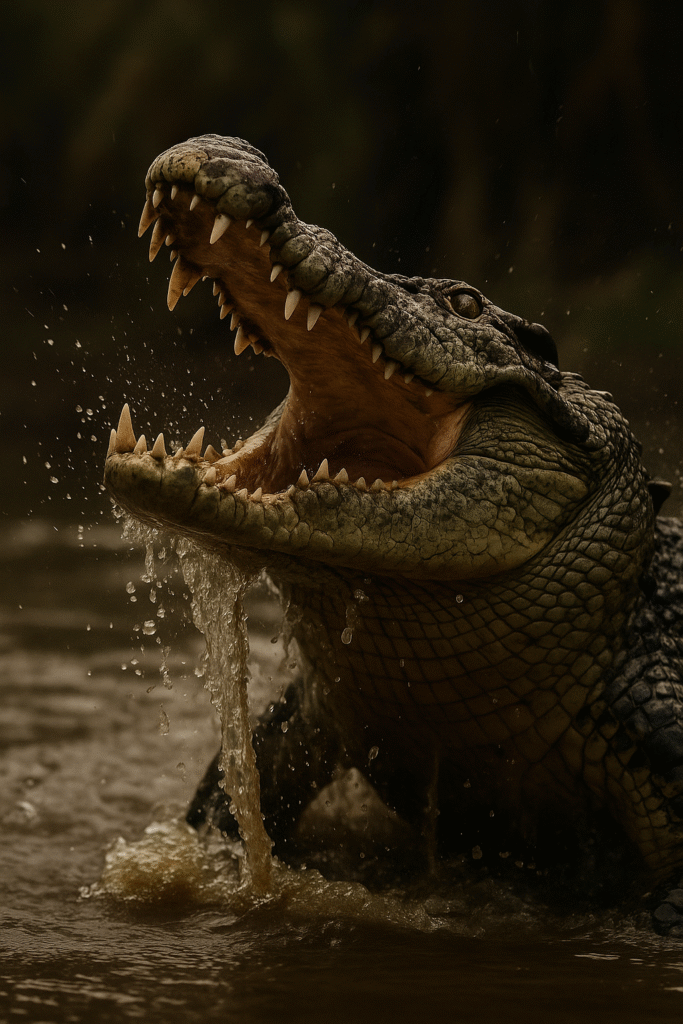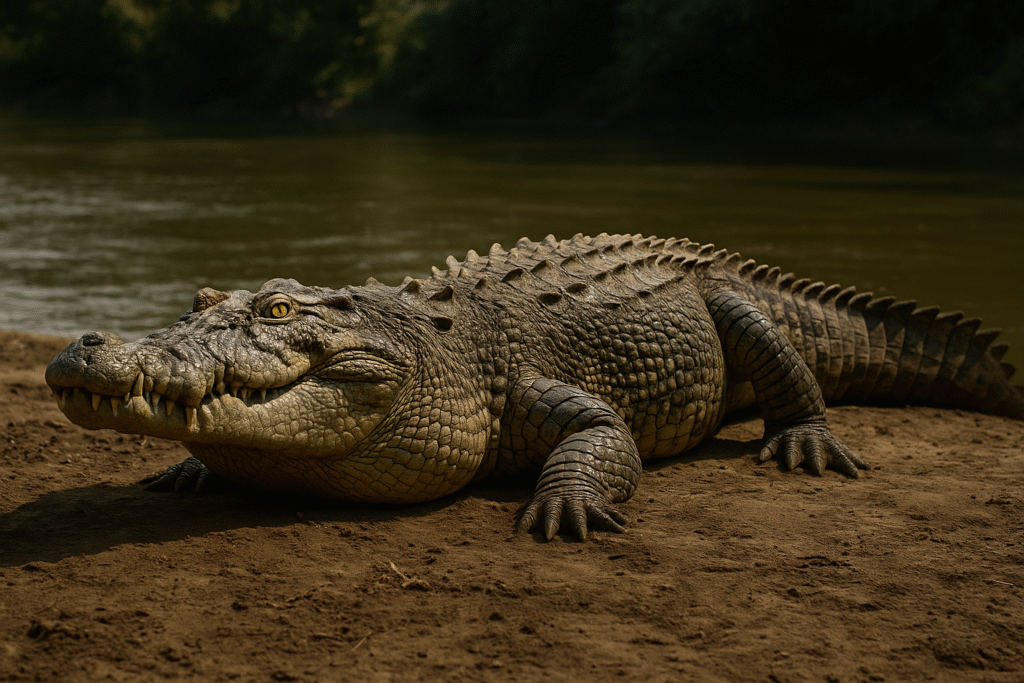At the meeting place of river and sea, where brackish waters churn with tides and mangroves stand as sentinels, a titan lurks. The Saltwater Crocodile (Crocodylus porosus) is not just the largest reptile alive today—it is a living embodiment of raw, primordial power. Stretching over six meters in length and weighing more than a ton, it has inherited the throne of an ancient dynasty that has endured for over 200 million years.
The Apex of Apex Predators
Unlike its freshwater cousins, the saltwater crocodile is a master of two worlds. It patrols rivers, estuaries, and even open sea, capable of traversing hundreds of miles along coastlines. A silent drifter, it waits beneath the water’s surface, its eyes and nostrils breaking through the current like fragments of stone. When it strikes, it does so with explosive speed, dragging prey into the depths with a jaw force greater than that of any known animal.

Its diet reflects its dominance: fish, water buffalo, monkeys, wild boar, and occasionally sharks. Nothing that enters its territory can be considered safe.
A Cultural Shadow
Across Southeast Asia and northern Australia, the saltwater crocodile commands both fear and reverence. In Aboriginal traditions, it is the Ngatji, a guardian spirit of rivers, protector and punisher alike. In parts of Southeast Asia, it is woven into folklore as both creator and destroyer, a figure that embodies the duality of nature itself.
Even colonial accounts testify to its mythic stature: entire expeditions were forced to halt when faced with its presence, as if nature itself had drawn a line in the mud and water.
Survivors of Time
What makes the saltwater crocodile extraordinary is not only its size or ferocity, but its lineage. Crocodilians are among the last survivors of the age of dinosaurs, their bodies scarcely altered by the march of evolution. Every ridge of scale, every muscular ripple, is a testament to design perfected for survival.
And yet, despite their formidable reputation, saltwater crocodiles face the same threats that haunt much of the natural world: habitat loss, poaching for skins, and conflict with humans who encroach upon their waterways. In some regions, conservation efforts have brought populations back from the brink, while in others, numbers remain precariously low.

The Throne of the Mangroves
To encounter a saltwater crocodile in the wild is to witness the closest thing we have to an ancient leviathan. It is not merely an animal, but a presence—the swamp’s unspoken law, the estuary’s silent monarch. Its patience teaches us that survival is not always about speed or noise, but about endurance, concealment, and decisive power.

In the end, the saltwater crocodile is both relic and ruler, a titan that reminds us of a world older than our own. Its reign endures not by chance, but by mastery of an environment where land and sea converge.
Here, where the tides meet the rivers, the saltwater crocodile still waits. And as long as it does, the estuaries remain kingdoms not of men, but of scales and silence.


Reply